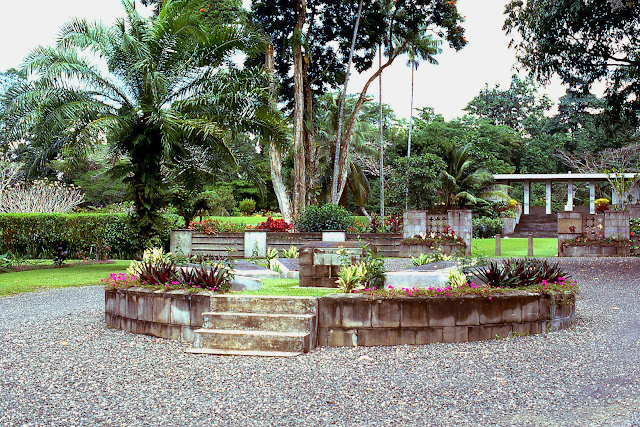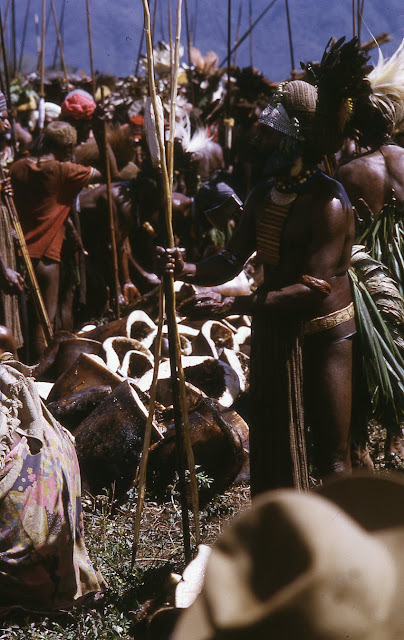Through contacts at Mt Hagen High School we had the opportunity to go out into the bush in the Nebilyer area to a compensation ceremony.
 |
| The upper Nebilyer River |
Writing this nearly 45 years after the event some details are rather sketchy. However, thanks to my writing brief details on the 35 mm slides at the time I can give a reasonable account of what this was all about.
Pay back was, and probably still is, part of the culture in the Highlands of Papua New Guinea.
The two tribes that appear in these photos are the Ulga and Uga Buga tribes. One of was at war with the Coolga tribe. The Coolgas were numerically superior and were at war with either the Ulgas or the Uga Bugas. Unfortunately, I don’t know which. Let’s say it was the Ulgas for the purpose of the story behind this compensation.
As the Ulgas were at a numerical disadvantage they got their friends in the Uga Bugas to join the line in a fight with the Coolgas. One of the Uga Bugas was killed and so to make amends the Ulgas had to pay (back) compensation to the Uga Bugas.
 |
| Uga Bugas arriving |
 |
| Ulgas arriving |
The local kiap, an Australian, organised transport in a convoy of heavily armed police with machine guns and other weapons (shot guns and tear gas) for us to go through the bush to where compensation was to be handed over. With the kiap, Mark Rosen from Mt Hagen High School, myself and my wife, there were four Europeans among about ten thousand locals that day.
 |
| We did not feel threatened of unwelcome. |
 |
| Compensation arriving. |
Part of the compensation were dozens of butchered pig carcasses lined up in the hot sun. Cowie shells from the coast as well as some large shells were included. Also I spotted a live cus cus, a rather strong marsupial which was part off the deal. Cus cus skins are prized and part of their bilas.
 |
| Cus cus tied up. |
In 1974 I didn't know much about photography. As a result I was was on the wrong side on terms of the light and couldn't do much about it lightening it up.
 |
Part of the compensation (very fatty pigs) lined up for inspection.
(Police vehicles in the background) |
After all the compensation was lined up, a considerable amount of time was involved in inspection and discussion before acceptance. We didn't get to see this.
Around 3 pm we were suddenly bundled up in a police vehicle and removed in a hurry. Thousands of Coolgas were coming and a full scale fight broke out half an hour later. It was not the place to be with arrows flying and axes being wielded!

























































